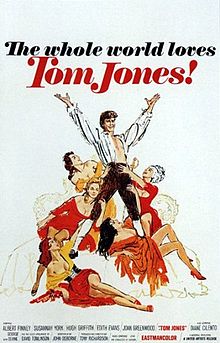Welcome to England in the 12th century!
That’s the setting of the 1952 best picture nominee, Ivanhoe. It’s a green and healthy land, full of chivalrous knights and corrupt royalty and outlaws who steal from the rich and give to the poor. King Richard the Lion Heart (Norman Wooland) left on a crusade and he hasn’t been seen for a while. Richard’s evil brother, the cowardly King John (Guy Rolfe), rules the country and has little interest in making sure that Richard returns. Even when Wilfred of Ivanhoe (Robert Taylor) discovers that Richard is being held for ransom, John declines to do anything about it.
Ivanhoe is determined to raise the money to pay the ransom and restore Richard to the throne of England, even if he has to secretly compete in a tournament to do it. Of course, before he can do that, he’ll have to buy a horse and some armor. Fortunately, he comes across Isaac (Felix Aylmer) and his daughter, Rebecca (Elizabeth Taylor). Isaac and Rebecca give Ivanhoe the money necessary to purchase a good horse and equipment. Rebecca falls in love with Ivanoe, despite the fact that Ivanhoe is in love with Rowena (Joan Fontaine, who spends most of the movie looking rather bored).
Speaking of love, the king’s favorite knight — the hot-headed but honorable Sir Brian De Bois-Guilbert (George Sanders) — has fallen in love with Rebecca. That, of course, complicates matters when the anti-Semitic King John attempts to have the Jewish Rebecca burned at the stake for witchcraft. When Ivanhoe invokes the “wager of challenge,” in an effort to save Rebecca’s life, Sir Brian is chosen as the court’s champion. Needless to say, this leads to some awkward moments….
Listen, I would be lying if I said that it was easy for me to follow the plot of Ivanhoe. It seemed like every few minutes, someone else was plotting against either Ivanoe or King John and it got a bit difficult to keep track of what exactly everyone was trying to accomplish. By the time Robin Hood (Harold Warrender) showed up, I have given up trying to make sense of the plot.
Instead of worrying about the exact details of the plot, I decided to just enjoy the film as a spectacle. If nothing else, Ivanhoe is gorgeous to look at. The colors are lush and full and the costumes and the sets are all wonderfully ornate. Apparently, 12 Century England was a very colorful place. There’s a lot of battles and jousts and sword fights. I couldn’t always keep track of who was fighting who but at least the film moved at a steady pace.
Robert Taylor and Joan Fontaine make for a dull leading couple but a young Elizabeth Taylor is stunning in the role of Rebecca and George Sanders transforms Sir Brian into a truly tragic figure. Guy Rolfe is memorably evil as King John, though he’s perhaps not as much fun as Oscar Isaac was in Robin Hood. Everyone in the movie looks good in their period costuming. Really, that’s the most important thing.
Ivanhoe was nominated for Best Picture but lost to The Greatest Show On Earth.

